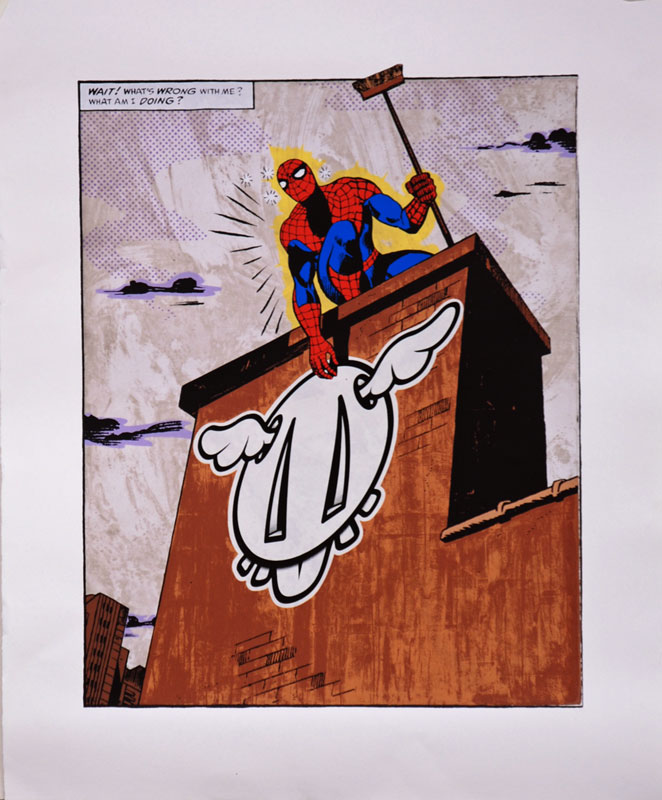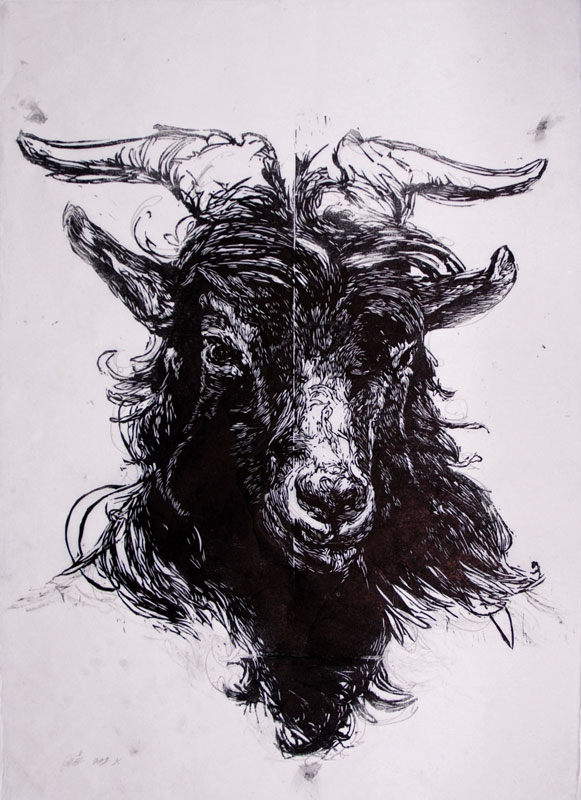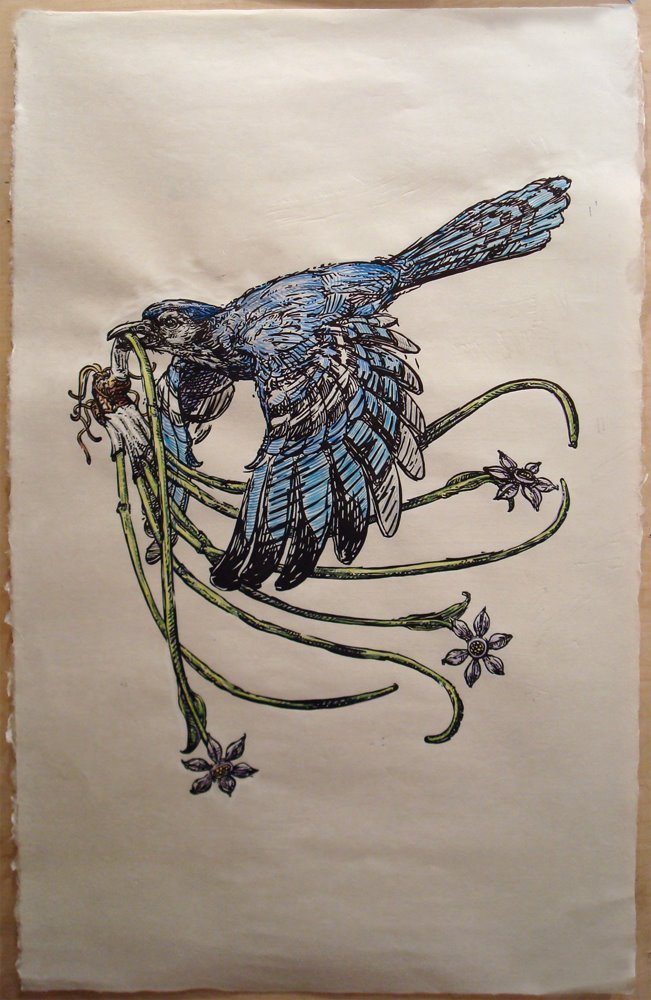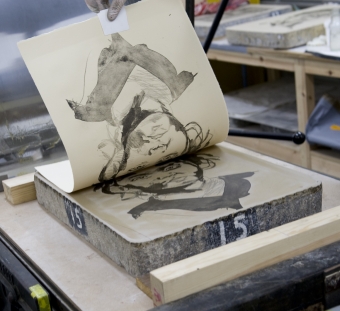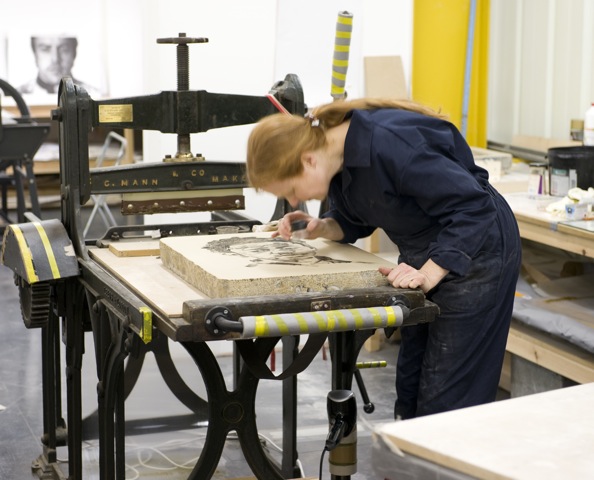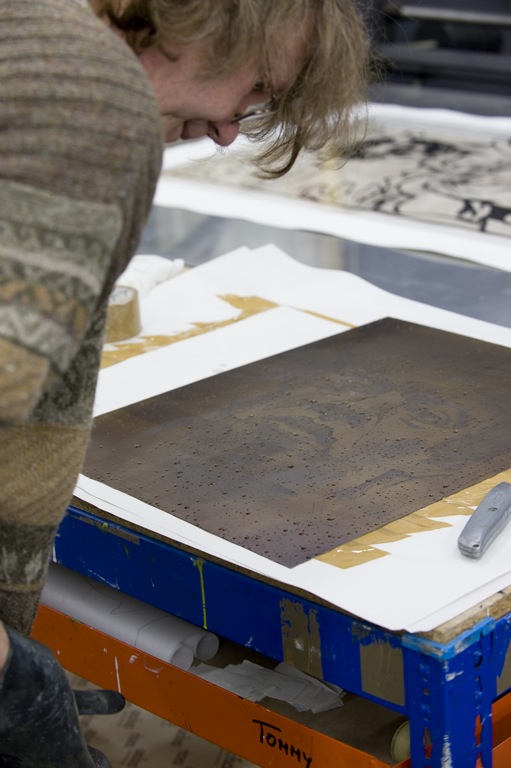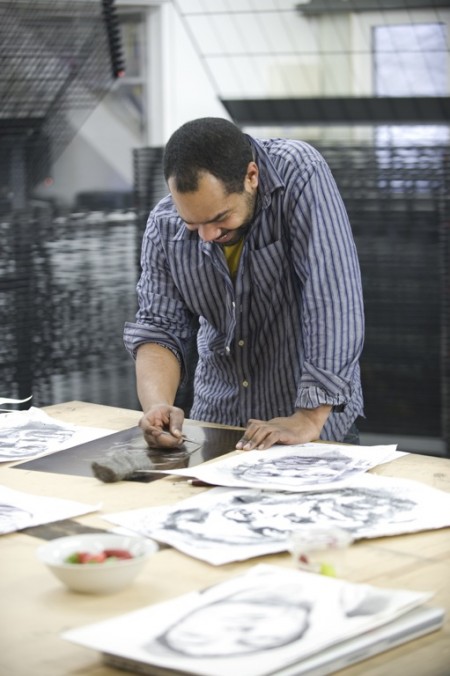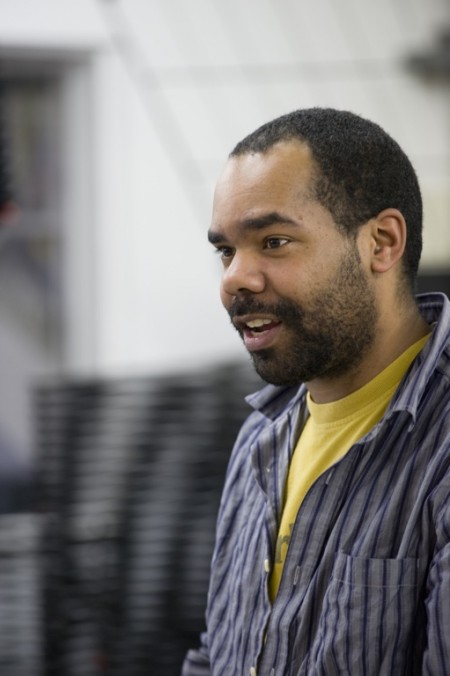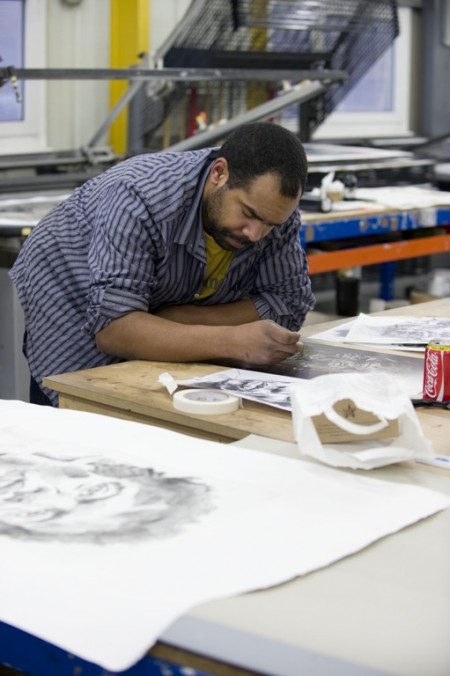This Saturday sees London’s Black Rat Press open the doors to their second Annual Print Show which gives a unique insight into the way prints are created with print demonstrations with Matt Small and Black Rat’s master printers as well as the opportunity to ask the experts those technical questions you’ve never been able to ask before. In addition to several new editions there will also be the opportunity to pick up special small editions, hand coloured variants and other unique works by the Black Rat Press artists including D*Face, Sweettoof, Brian Adam Douglas, Gaia, Lucas Price, Nick Walker, Blek Le Rat and Slinkachu. Doors open at 4 pm.
To celebrate the show, AM has been lucky enough to get hold of some very special preview images as well as interviews with Black Rat Press and their master printers. Take a look after the jump.
Black Rat Press Interview
Arrested Motion (AM): What is it about printmaking that has made Black Rat Press pursue and develop traditional printing techniques so much?
Mike Snelle from BRP: Before starting Black Rat we were dealing in the secondary market specializing in selling prints by artists like Lucian Freud and Hockney. I was quite geeky and into finding all these rare trial proofs that were never editioned and looking for all these retired dealers and publishers, looking through their archives. I also spent a lot of time at printing studios and got to see things like Paula Rego lithographs being made and speak with printers like Stanley Jones about the various processes. I came to understand that printmaking was not an inferior cheaper art form to painting but that it offered artists completely different ways of mark making. When I started to become involved in primary market dealing, I realized that whilst there were a number of people publishing screenprinted reproductions of paintings, many of the artists had not had the opportunity to spend time at a print studio and experiment with different techniques. So, I guess the idea of Black Rat Press was to marry these traditional print techniques with this hugely talented new generation of artists.
AM: How involved is the gallery in the printmaking process?
BRP: It varies from project to project. Sometimes, we will see a work that will give us an idea which we then discuss with the artist and the printer and see which techniques would be most suited to translate that idea to paper. Other times, we just love an artist’s work and invite them to spend some time at the studio, experiment with different mediums, and see what happens. This is often the most rewarding way of working for all parties as the results can be quite unexpected.
AM: What’s your favourite print by a non-BRP artist?
BRP: Grayson Perrys ‘Map of an Englishman’ – in my opinion the greatest print published in the last decade.
AM: What are you looking forward to most on Saturday?
BRP: It passing without incident. The enjoyment kind of comes after when you talk to people about how they found the experience. Last year some kids ended up getting involved drawing on an etching plate with Matt Small – that was really cool.
AM: Have you ever found yourself going to extreme lengths like queuing outside for many hours for a print release or other piece of art?
BRP: Ermm pass. I have flown to Warsaw and back in a day to be collected in a battered old BMW by some guys who didn’t speak any English and drove further and further into the country in thick snow getting increasingly frightened with a bundle of cash in a bag trying to buy some rare Graham Sutherland prints. Does that count?
Many thanks Black Rat Press – and yes – that certainly counts!
AM also caught up with Goldmark Atelier – the master printers Black Rat Press use to create their prints – and asked them the following questions:
Arrested Motion (AM): What are the main print techniques you use?
Goldmark Atelier (GA) : Etching, Silkscreen, Stone lithography.
AM: How do you typically work with artists on a particular print project and does your relationship with an artist such as Matt Small work in a similar way?
GA: There are many ways that printer and artist collaborate. The simplest is for the artist to send an image with notated instructions for us to break down the image and compile in a way suitable for whichever given process chosen. Another way is for the artist to send us pre-separated sheets which are used directly for stencil-making. Finally, and probably most interesting, is for the artist to visit the studio in order to work with the printer. This normally results in completely original work that involves a lot of experimentation and new ways of mark-making for the artist. The recent etchings and lithographs we worked on with Matt Small which are coming out on Saturday are a great example of what can be done when an artist comes to the studio.
3. AM:  Some of the prints you’ve worked on look incredibly complicated with layer upon layer of colour reproducing an unusual painting technique in an incredibly accurate way. What things can go wrong with a print and how does the proofing process work?
GA: The list of possible things to go wrong is limitless, but includes: paper movement, stencil breakdown, loss of detail, streaking, creasing, mis-registration, dust, inconsistency in colour and detail, paper faults etc. etc. Proofing often involves a lengthy to-and-fro between artist, publisher and printer until the artist is completely satisfied with the final image. If the artist is working in the studio, then most problems can be overcome relatively quickly, but otherwise it is a simple procedure of; proof, amend, re-proof until all parties are happy. This process can take several months.
AM: Any advice for somebody working on their own prints or keen to get into the industry?
GA: The industry is very small and therefore professional practice is very scarce. If you want to work on your own prints a good way to start is to be inventive and use the kitchen table approach.
AM:Â What’s your favourite print (whether by you or somebody else) and what prints do you have hanging on your walls at home?
GA: Favourite is a variable, but at the moment it is a Antoni Tapies etching and silkscreen which I recently bought at auction and is now in the dining room. Other artists prints on our walls include Swoon, Matt Small, Prunella Clough, Elisabeth Frink and an assortment of original pieces dotted around.
Many thanks Goldmark Atelier and good luck for the show – it’s sounding very special indeed.
More photos showing the creative process and Goldmark Atelier, BRP and Matt Small hard at work on a new print offering here:
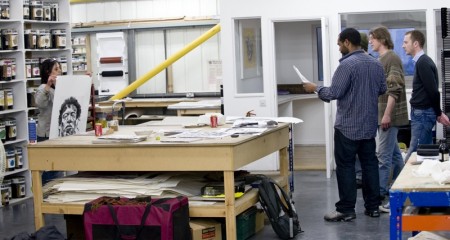
Images courtesy of BRP – many many thanks!
Discuss this show here.




